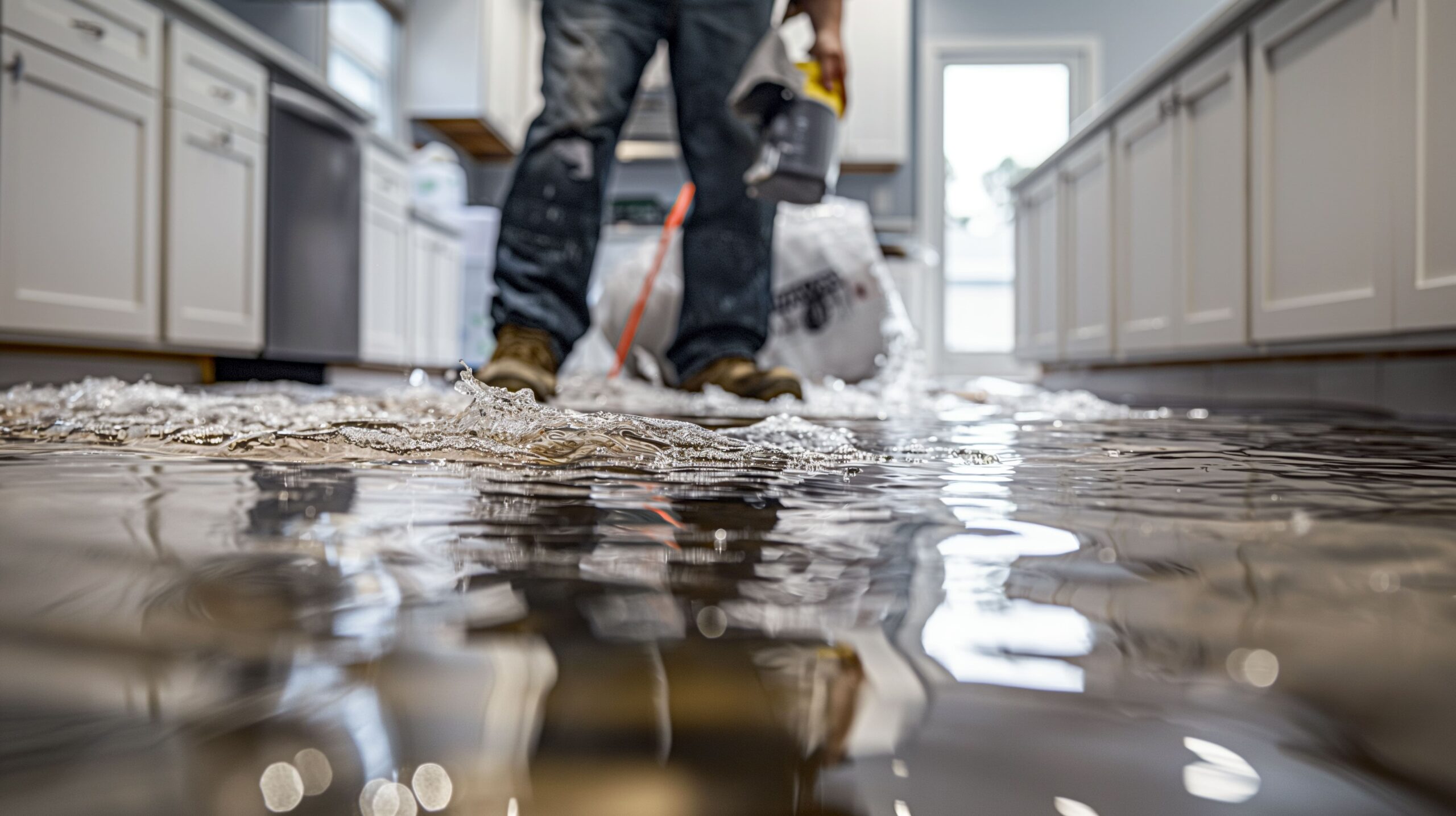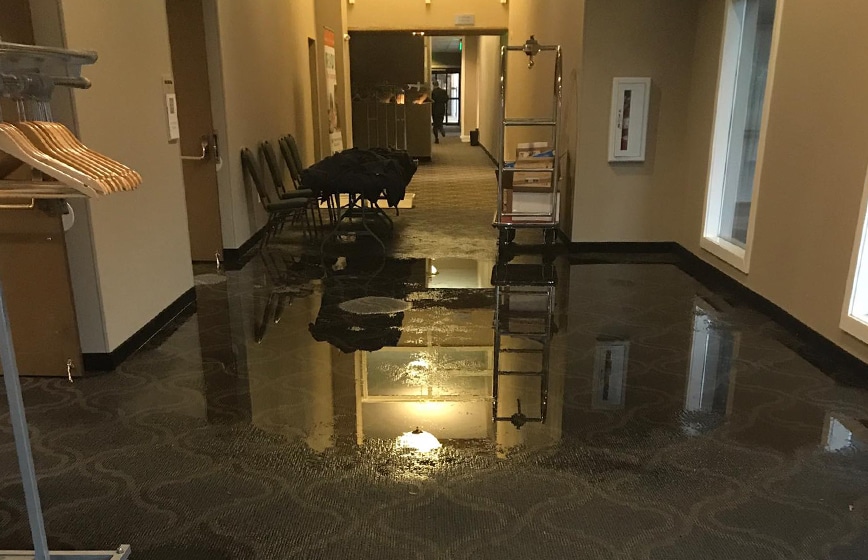Top Tips for Effective Water Damage Restoration: Protect Your Residential Or Commercial Property Today
Water damage can strike unexpectedly, triggering substantial disruption and possible threats. Reliable restoration calls for an organized strategy to lessen further injury. From examining the damage to carrying out preventive procedures, each step plays an essential duty in safeguarding home. Understanding these strategies can make all the distinction in the after-effects of a water-related dilemma. What important activities should be focused on to assure extensive defense?
Analyze the Damage Immediately
When a water damage event takes place, it is vital to examine the damage right away to minimize further concerns. This first examination helps establish the level of the damage and determines affected areas. Water can leak into wall surfaces, floorings, and furnishings, leading to mold growth and architectural instability if not addressed immediately. A complete assessment ought to include looking for discoloration, dampness, and moldy smells, which show wetness existence. It is likewise important to record the damage through pictures and notes for insurance coverage purposes. Involving specialists for a much more thorough assessment may be required, specifically when managing considerable or concealed damage. Flood Cleanup Services. Early recognition and precise assessment lay the foundation for efficient restoration and protect the home from additional problems
Turn off the Water System
Shutting down the water supply is an important action in avoiding more damage during a water-related occurrence. When a leakage or flooding happens, prompt activity is crucial to minimize the level of the damage. Finding the major water shut-off valve should be a concern. This shutoff is commonly situated near the water meter or where the water line enters the building. Once located, turning the valve clockwise will certainly quit the flow of water. In situations where the major shutoff is hard to reach, specific shut-off valves for appliances may also be used. Without delay shutting down the water system not just secures the building from added damage however likewise assists in the succeeding restoration procedure, making certain that recovery initiatives can start right away.
Get Rid Of Excess Water Immediately

Removing excess water quickly is crucial for minimizing damage and avoiding mold growth in affected areas. The longer water continues to be touching materials such as drywall, wood, and insulation, the better the threat of structural damage and the advancement of mold. Water Damage Restoration. House owners must act promptly to analyze the circumstance and utilize ideal tools, such as damp vacuums or pumps, to remove standing water effectively. If the quantity of water is significant, speaking to professional restoration services might be essential, as they can supply specific tools and experience. Additionally, removing furnishings and valuables from the damaged location can aid to lower damage and help with the general restoration procedure. Timely activity not just safeguards residential property but also aids in a smoother recovery journey
Dry Out the Affected Location
After removing excess water, it is vital to dry out the afflicted area completely. This entails eliminating any type of standing water and improving air flow to assist in dissipation. Efficient drying out will assist avoid mold growth and further damage.

Get Rid Of Standing Water
Promptly resolving standing water is important for reliable water damage restoration. The visibility of stationary water can cause more residential property damage and develop a setting conducive to mold and mildew growth. To alleviate these dangers, it is necessary to eliminate standing water as rapidly as possible. This process commonly involves utilizing completely submersible pumps, damp vacuum cleaners, or specialized extraction equipment. Specialists advise assessing the depth and extent of the water prior to making a decision on the suitable method for removal. Safety and security preventative measures ought to likewise be taken, including putting on protective equipment and guaranteeing electrical energy is turned off in affected areas. When the standing water is efficiently removed, the drying out process can begin, even more safeguarding the home from ongoing damage.
Rise Air Blood Circulation
Increasing air blood circulation is vital for effectively drying out locations impacted by water damage. This procedure helps to speed up dissipation, reducing the risk of mold and mold growth. Professionals commonly recommend making use of fans to develop a steady air movement throughout the area. Positioning box fans in home windows can attract fresh air, while high-velocity fans can route air flow in the direction of moist surfaces. Water Damage Restoration. In addition, opening home windows and doors allows for cross-ventilation, improving the drying out process. Dehumidifiers can additionally be utilized to get rid of excess wetness from the air, further assisting in drying. By making sure that air flows freely, homeowner can considerably decrease the lasting results of water damage and secure the stability of their framework
Evaluate for Mold Development
Mold growth is a major issue following water damage, as it can cause health issues and structural damage. After any flooding or leakages, it is vital to conduct a complete inspection of the influenced locations. This consists of checking covert rooms such as behind walls, under carpets, and in basements or attic rooms where moisture may stick around. Signs of mold and mildew include a musty odor, staining on surfaces, or noticeable development. Residential property proprietors should utilize protective gear when examining, as mold and mildew spores can present health and wellness threats. If mold and mildew is spotted, it is essential to resolve it instantly, as delaying remediation can worsen the problem and boost the danger of major health and wellness problems for owners. Early intervention is vital to effective mold and mildew monitoring.

Repair and Recover Broken Structures
When dealing with water damage, it is crucial to initial analyze the architectural honesty of the influenced areas. This evaluation aids recognize possible hazards and notifies the essential repair strategies. Involving professional restoration solutions guarantees that the restoration process is performed safely like this and effectively.
Analyze Structural Integrity First
Before starting any water damage restoration, it is important to assess the architectural honesty of the afflicted area. This examination helps recognize any kind of jeopardized aspects, such as beams, foundations, or walls, which might position safety and security risks - Water Damage Restoration. Evaluating for signs of warping, fracturing, or mold growth is important, as these signs can expose underlying damage that requires prompt focus. Furthermore, understanding the extent of the damage can direct restoration efforts and identify whether fixings are feasible or if substitute is necessary. It is necessary to record searchings for thoroughly, as this information can be useful for insurance policy claims or future reference. Prioritizing architectural assessment guarantees that restoration efforts continue securely and properly, eventually safeguarding the property and its passengers
Use Expert Restoration Services
Utilizing specialist restoration solutions is important for effectively fixing and bring back damaged structures after water events. These professionals possess the essential training, tools, and experience to evaluate and reduce water damage completely. They can recognize concealed issues, such as mold development and structural weaknesses, that might not be right away noticeable. Specialist solutions also use advanced drying out methods and equipment, guaranteeing that all moisture is removed to stop further damage. Furthermore, they abide by market standards and regulations, making certain that the restoration procedure is risk-free and reliable. By involving restoration specialists, homeowner can expedite recuperation, minimize long-lasting damage, and inevitably safeguard their investment. This proactive technique is necessary in maintaining the honesty and safety of afflicted structures.
Protect Against Future Water Damage
To efficiently protect against future water damage, home owners need to take on a proactive technique to upkeep and repairs. Routine examination of gutters, roof coverings, and downspouts is necessary; clogged up seamless gutters can lead to water overflow and roof leaks. In addition, looking for leakages in pipes fixtures and home appliances can prevent potential damage. Home owners should also think about mounting sump pumps in cellars or low-lying locations to manage water buildup. Securing splits in structures and making certain correct water drainage around the residential property are crucial action in securing against water invasion. Furthermore, keeping humidity degrees with dehumidifiers can avoid mold and mildew growth. By executing these safety nets, home owners can substantially lower the threat of water damage and protect their property for the long-term.
When a water damage event takes place, it is necessary to evaluate the damage promptly to reduce further concerns (Water Damage Restoration). Getting rid of excess water promptly is vital for decreasing damage and protecting against mold growth in impacted areas. Promptly attending to standing water is important for effective water damage restoration. The visibility of stationary water can lead to additional residential or commercial property damage and develop an environment conducive to mold and mildew development. Before launching any type of water damage restoration, it is necessary to examine the structural honesty of the damaged location